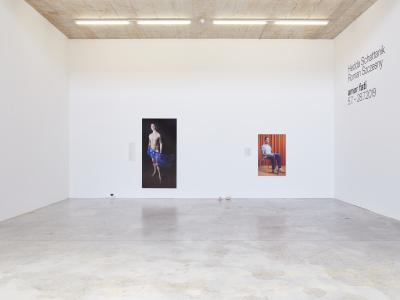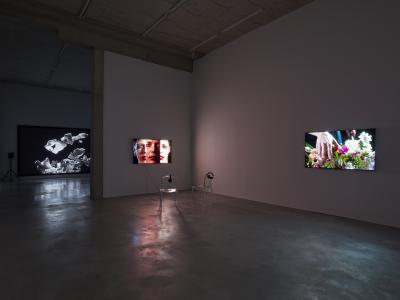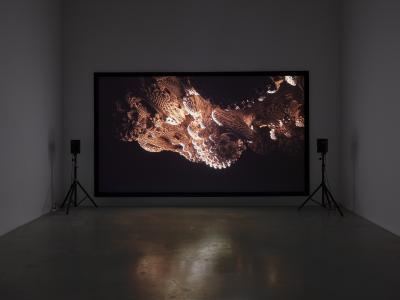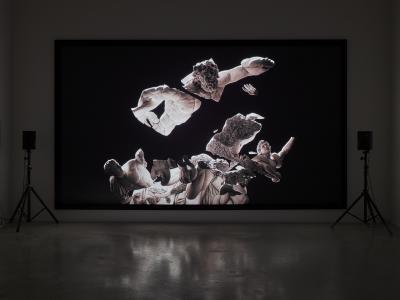amor fati
Hedda Schattanik & Roman Szczesny
05.07.2019 - 28.07.2019
"I do not want to wage war against what is ugly". (Friedrich Nietzsche)
Hedda Schattanik (*1992 in Westerstede) and Roman Szczesny (*1987 in Bensberg) have officially been working as a collective since 2014. Hedda studied; Roman studies in the classes of Andreas Gursky, Dominique Gonzalez-Foerster and Marcel Odenbach at the Kunstakademie Düsseldorf. In their installation video works, they interweave cinematographic elements with surreal animation, literature, drama, sculpture, photography, and drawing. The focus of their artistic examination is the relationship between natural and symbolic order as well as the representation and analysis of existential problems arising from questions of human identity. Rejecting linear narrative structures, they develop a narrative of asymmetric structures that superimpose future, past, and states of being.
The title amor fati refers to a maxim of Friedrich Nietzsche that he formulates in the fourth book of The Gay Science (Die fröhliche Wissenschaft), postulating "the ethical-aesthetic manifestation of a fatalism intended to overcome nihilism"1. In doing so, he outlines the concept of a perception attitude that always considers aesthetic experience by reference to a subjective, individual peculiarity. The love of fate should express itself in a holistic affirmation of the state of the world and as the artistic self-creation of man, who at the moment of its fulfillment not only accepts the eternal return of the same but expressly wants it. This devotion encompasses an expansion from the universe to the smallest molecule.
In their video work of the same name amor fati, which includes samplings of earlier video works, the narrative oscillates between the introspective view of Elisa H., a great industrial heiress and collector, and the visualization of a dynamic cosmic-biological state. Reflecting on the eternal return of the same (Nietzsche) Elisa tells a story of resettlement. The video begins and ends with the protagonist as a hermit in a world of capitalist accumulation. The narrative is interrupted by the bursting of an animated version of the famous Laocoon group, a popular object of analysis in the art theory of Lessing, with the help of which the paradigms and incompatibility of art and literature should be worked out.
Hedda Schattanik and Roman Szczesny break with this thesis and distort, alienate and superimpose text, sound and image, until what can be described as reality dissolves into generic parallel poetry.
1 Kiyoshi Nishigami: Nietzsches Amor fati. Der Versuch einer Überwindung des europäischen Nihilismus, Frankfurt/M. u. a. 1993, S. 264.

Hedda Schattanik & Roman Szczesny
Photo: Paul Schöpfer

Hedda Schattanik & Roman Szczesny
Photo: Paul Schöpfer

Hedda Schattanik & Roman Szczesny
Photo: Paul Schöpfer

Hedda Schattanik & Roman Szczesny
Photo: Paul Schöpfer

Hedda Schattanik & Roman Szczesny
Photo: Paul Schöpfer

Hedda Schattanik & Roman Szczesny
Photo: Paul Schöpfer